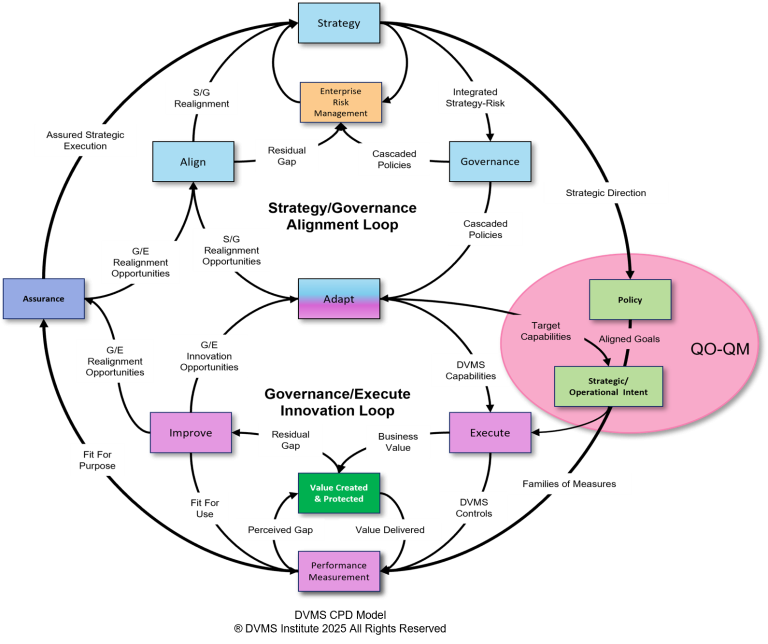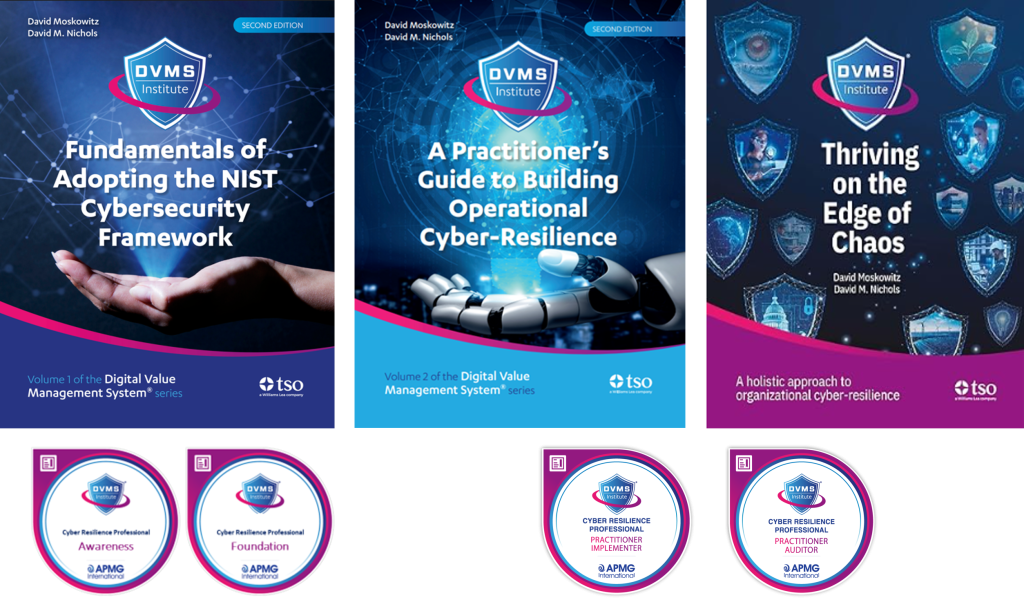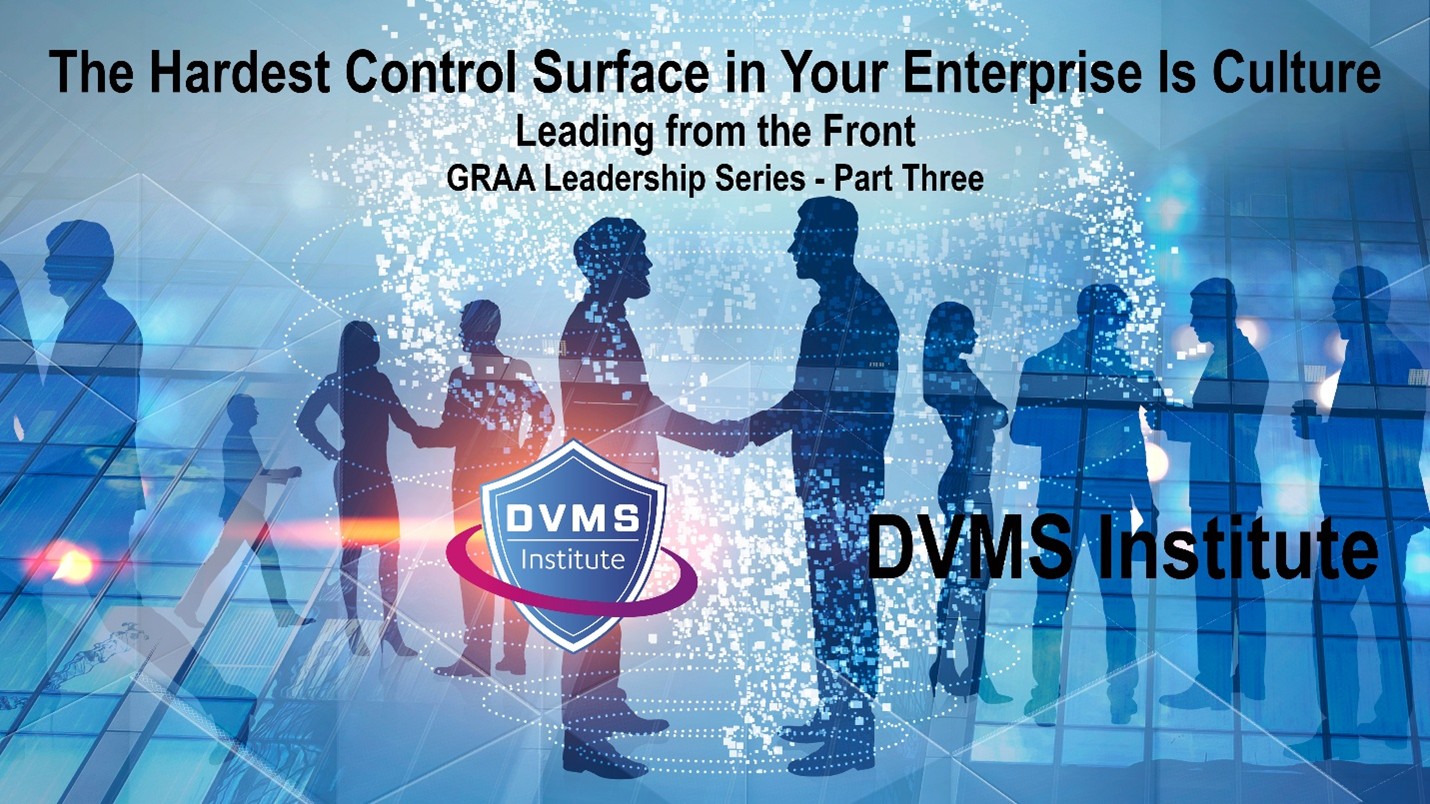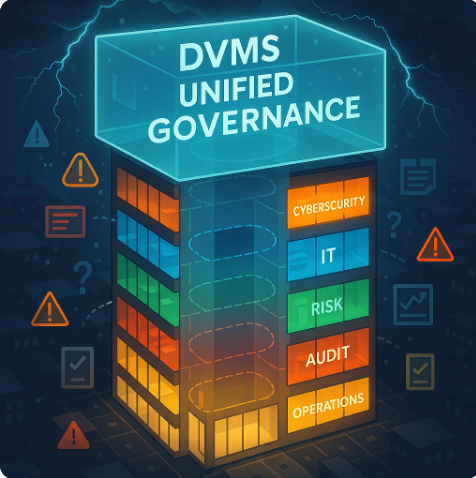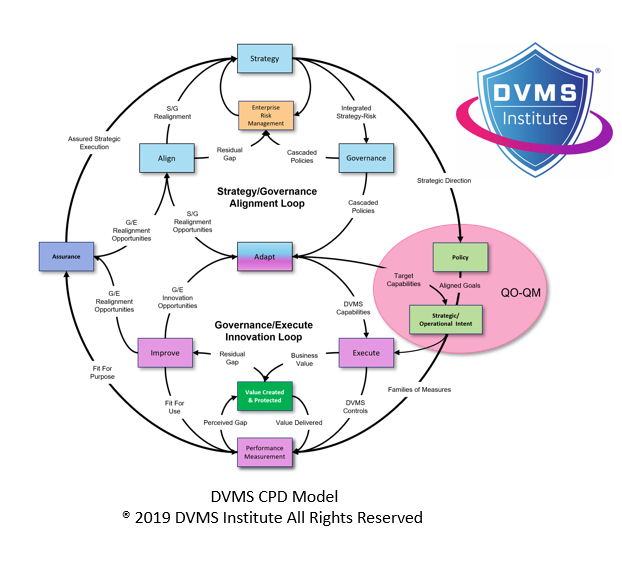The DVMS CPD Model – The Engine Behind Adaptive Operational Resilience
Rick Lemieux – Co-Founder and Chief Product Officer of the DVMS Institute
Introduction to the DVMS CPD Model
The CPD (Create, Protect, and Deliver) model is emerging as a vital model for delivering holistic and adaptive digital business governance, resilience, and assurance in today’s fast-paced, risk-laden digital landscape. Traditional governance and risk management approaches are no longer sufficient in an era where organizations increasingly depend on technology, digital ecosystems, and interconnected data systems. Businesses require a model that supports ongoing change and embeds resilience and assurance into the fabric of their operations. The DVMS CPD Model addresses these needs by establishing a continuous, integrated, iterative approach to managing digital risks and enabling strategic decision-making.
Aligning Strategic Intent with Operational Execution
At its core, the DVMS CPD Model is designed to align strategic intent with operational execution. It ensures that digital governance is not a static compliance exercise, but a dynamic capability embedded in everyday business activity. This model recognizes that digital transformation and innovation are perpetual processes; therefore, the mechanisms used to govern them must also be fluid and responsive. By integrating governance into the planning and delivery cycles, the DVMS CPD Model facilitates real-time risk visibility, continuous alignment with business goals, and adaptive controls that evolve with the threat landscape.
Unifying Governance Across Siloed Functions
Holistic governance under the DVMS CPD Model stems from its ability to unify traditionally siloed functions such as risk management, compliance, IT operations, cybersecurity, and strategic planning. Rather than treating these areas as independent domains, the model brings them together under a cohesive governance overlay system. This integration allows for better decision-making, enabling stakeholders to understand the interconnected impacts of risks, opportunities, and resource allocations. For instance, a risk identified in a product development initiative is not just flagged for the security team—it is assessed in the broader context of enterprise strategy, customer impact, and operational continuity.
Resilience as a Central Outcome
Resilience is a central outcome of the DVMS CPD Model. The model emphasizes preparedness, response, and recovery capabilities as ongoing priorities rather than one-time projects. Digital resilience in the CPD context is more than just withstanding cyberattacks or data breaches; it encompasses the organization’s capacity to adapt to market disruptions, supply chain volatility, regulatory changes, and technology failures. Organizations can anticipate potential disruptions through continuous monitoring, feedback loops, and scenario planning and recalibrate their strategies before risks materialize. This real-time adaptability is made possible by the DVMS CPD Model’s iterative cycles of planning and delivery, which allow for regular course corrections without disrupting overall business momentum.
Continuous and Embedded Assurance
The assurance provided by the DVMS CPD Model fundamentally differs from traditional models. Assurance in this context is not limited to audits or periodic assessments. Instead, it is embedded into every cycle of planning, development, and operational execution. Assurance becomes a continuous flow of insights, validations, and checks that provide stakeholders with confidence that digital operations are compliant, effective, and aligned with the organization’s mission. This continuous assurance also supports external reporting, stakeholder communications, and regulatory obligations, reducing the time and resources needed for formal assurance activities while enhancing their accuracy and relevance.
Adaptability in a Rapidly Changing Environment
The DVMS CPD Model is inherently adaptive, a quality that is essential in today’s environment of accelerating digital change. Businesses must be able to pivot quickly in response to emerging technologies, new customer expectations, and evolving threat vectors. The DVMS CPD Model enables this agility by embedding feedback mechanisms into every planning and delivery cycle stage. These mechanisms capture lessons learned, operational insights, and performance metrics, feeding them into future planning activities. This ensures that the governance overlay system evolves continuously and is informed by actual business performance and risk intelligence rather than assumptions or static models.
Cross-Functional Collaboration for Success
A critical component of the DVMS CPD Model’s success is its emphasis on cross-functional collaboration. Governance, resilience, and assurance cannot be delivered in isolation—they require the active participation of stakeholders from across the enterprise. The DVMS CPD Model fosters this collaboration by creating shared governance structures, integrated risk management practices, and standard data and performance tracking platforms. This shared ownership of digital risk and value enables faster decision-making, better prioritization of initiatives, and more robust defense against complex, cross-cutting risks.
Balancing Value Protection and Delivery
Another way the DVMS CPD Model enhances governance and resilience is through its focus on value protection and value delivery. Traditional governance models often emphasize control at the expense of agility, leading to delays and bottlenecks that hinder innovation. The DVMS CPD Model, by contrast, views governance as a value enabler. By providing clear decision-making insights, real-time risk insights, and agile controls, the model helps organizations confidently pursue innovation and transformation. It ensures that value-generating initiatives are adequately protected without stifling creativity or responsiveness.
Operational Enablers of the DVMS CPD Model
In operational terms, the DVMS CPD Model supports a range of enabling capabilities, including digital risk classification, digital asset protection, critical service mapping, and dynamic control testing. These capabilities are woven into the planning and delivery cycles, allowing organizations to assess risks, test controls, and optimize resilience continuously. For example, by mapping digital assets and critical services to business outcomes, the DVMS CPD Model allows organizations to focus their risk mitigation efforts where they matter most. This targeted approach improves efficiency and enhances the organizational ability to recover quickly from disruptions.
Leveraging Automation and Data Analytics
The model also leverages automation and data analytics to drive governance and assurance activities. The DVMS CPD Model provides a dynamic and accurate view of the organization’s risk posture by using real-time data to monitor compliance, control effectiveness, and operational performance. This data-driven approach enables predictive risk management, where organizations can identify patterns, anticipate emerging risks, and proactively address them. Automation also reduces the manual effort associated with governance and assurance activities, freeing resources for more strategic tasks.
Driving a Cultural Shift in Risk and Governance
Perhaps most importantly, the DVMS CPD Model supports a cultural shift in how organizations think about risk and governance. It encourages continuous improvement, shared responsibility, and strategic alignment. Employees at all levels are empowered to contribute to governance goals through compliance, innovation, vigilance, and adaptability. This cultural shift is essential for building the resilient and trustworthy digital enterprise that clients, partners, and regulators increasingly expect.
Conclusion: Building Sustainable, Resilient Enterprises
The DVMS CPD Model delivers a comprehensive, adaptive, and forward-thinking approach to digital business governance, resilience, and assurance. Embedding continuous planning and delivery into the core of business operations enables organizations to navigate complexity, embrace innovation, and protect digital value in an ever-evolving environment. The model’s strength lies in its ability to unify diverse functions, foster collaboration, leverage real-time data, and drive agility without compromising control. As digital transformation accelerates and risk landscapes become more dynamic, the DVMS CPD Model offers a robust model for building sustainable, resilient, high-performing digital enterprises.
About the Author

Rick Lemieux
Co-Founder and Chief Product Officer of the DVMS Institute
Rick has 40+ years of passion and experience creating solutions to give organizations a competitive edge in their service markets. In 2015, Rick was identified as one of the top five IT Entrepreneurs in the State of Rhode Island by the TECH 10 awards for developing innovative training and mentoring solutions for boards, senior executives, and operational stakeholders.
Digital Value Management System® (DVMS)
The DVMS is an adaptive Culture-Enabled Governance System that enables businesses of any size to move from a static, paper-based governance system of processes and controls to a living, evidence-based system of Governance, Resilience, Assurance, and Accountability (GRAA).
At its core, the DVMS is a simple but powerful integration of:
-
Governance Intent – shared expectations and accountabilities.
-
Operational Capability – how the business actually performs
-
Assurance Evidence – proof that intended outcomes are being achieved
Rather than adding more complexity, a DVMS integrates fragmented frameworks and practices such as NIST CSF, GRC, ITSM, DevOps, and AI into a unified overlay system that enables leaders and regulators to see, in real time, whether the digital business is working as intended—and whether the risks that matter most are being managed proactively.
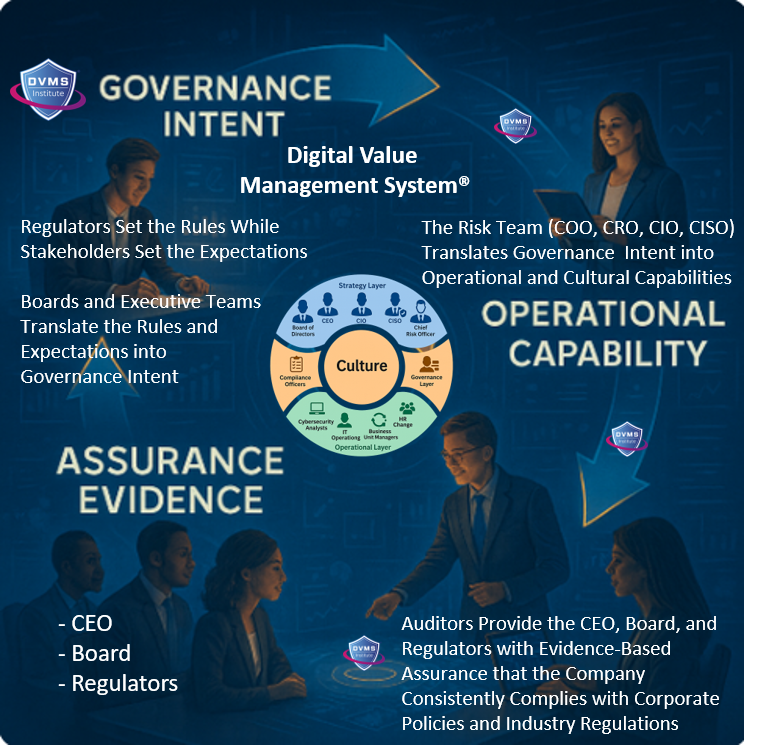
Through its MVC, CPD, 3D Knowledge, and FastTrack Models, a DVMS turns this integration into three distinctive capabilities:
A Governance Overlay that replaces fragmentation with unity. The DVMS provides organizations with a structured way to connect strategy with day-to-day execution. Leaders gain a consistent mechanism to direct, measure, and validate performance—across every system responsible for digital value.
A Behavioral Engine that drives high-trust, high-velocity decision-making. The DVMS embeds decision models and behavioral patterns that help teams think clearly and act confidently, even in uncertain situations. It is engineered to reduce friction, prevent blame-based cultures, and strengthen organizational reliability.
A Learning System that makes culture measurable, adaptable, and scalable. Culture becomes a managed asset—not an abstract concept. The DVMS provides a repeatable way to observe behavior, collect evidence, learn from outcomes, and evolve faster than threats, disruptions, or market shifts.
DVMS Organizational Benefits
Instead of replacing existing operational frameworks, the DVMS elevates them—connecting and contextualizing their data into actionable intelligence that validates performance and exposes the reasons behind unmet outcomes.
By adopting a DVMS, organizations are positioned to:
- Maintain Operational Stability Amidst Constant Digital Disruption
- Deliver Digital Value and Trust Across A Digital Ecosystem
- Satisfy Critical Regulatory and Certification Requirements
- Leverage Cyber Resilience as a Competitive Advantage
DVMS Leadership Benefits
The Digital Value Management System (DVMS) provides leaders with a unified, evidence-based approach to governing and enhancing their digital enterprise, aligning with regulatory requirements and stakeholder expectations.
For the CEO, the DVMS provides a clear line of sight between digital operations, business performance, and strategic outcomes—turning governance and resilience into enablers of growth and innovation rather than cost centers.
For the Board of Directors, the DVMS provides ongoing assurance that the organization’s digital assets, operations, and ecosystem are governed, protected, and resilient—supported by evidence-based reporting that directly links operational integrity to enterprise value and stakeholder trust.
For the CIO, CRO, CISO, and Auditors: an integrated, adaptive, and culture-driven governance and assurance management system that enhances digital business performance, resilience, trust, and accountability
DVMS White Papers
The three whitepapers below present a coherent progression that shifts organizations from compliance-driven thinking to a modern system of Governance, Resilience, Assurance, and Accountability (GRAA). Collectively, the three papers define a comprehensive system for building and governing resilient digital enterprises, grounded in evidence rather than assumptions.
The Assurance Mandate Paper sets the stage by showing why traditional GRC artifacts provide only reassurance—not evidence—and calls boards to demand forward-looking proof that their organizations can continue to create, protect, and deliver value under stress.
The Assurance in Action Paper elevates the conversation from leadership intent to managerial execution, demonstrating how the DVMS operationalizes resilience by translating outcomes into Minimum Viable Capabilities, connecting frameworks through the Create–Protect–Deliver model, and generating measurable assurance evidence that managers can use to demonstrate real performance rather than activity.
The Governing by Assurance Paper elevates the approach to the policy and regulatory level, showing how DVMS functions as a learning overlay system that links governance intent, operational capability, and verifiable evidence into a continuous loop—enabling regulators, agencies, and enterprises to govern by outcomes rather than checklists and to prove capability with measurable, auditable performance data.
DVMS Cyber Resilience Certified Training Programs
DVMS Cyber Resilience Awareness Training
The DVMS Cyber Resilience Awareness course and its accompanying body of knowledge publication educate all employees on the fundamentals of digital business, its associated risks, the NIST Cybersecurity Framework, and their role within a shared model of governance, resilience, assurance, and accountability for creating, protecting, and delivering digital value.
This investment fosters a culture that is prepared to operate within a system capable of transforming systemic cyber risks into operational resilience.
DVMS NISTCSF Foundation Certification Training
The DVMS NISTCSF Foundation certification training course and its accompanying body of knowledge publications provide ITSM, GRC, Cybersecurity, and Business professionals with a detailed understanding of the NIST Cybersecurity Framework and its role in a shared model of governance, resilience, assurance, and accountability for creating, protecting, and delivering digital value.
This investment fosters IT, GRC, Cybersecurity, and Business professionals with the skills to operate within a system capable of transforming systemic cyber risks into operational resilience.
DVMS Cyber Resilience Practitioner Certification Training
The DVMS Practitioner certification training course and its accompanying body of knowledge publications teach ITSM, GRC, Cybersecurity, and Business practitioners how to elevate investments in ITSM, GRC, Cybersecurity, and AI business systems by integrating them into a unified governance, resilience, assurance, and accountability system designed to proactively identify and mitigate the cyber risks that could disrupt operations, erode resilience, or diminish client trust.
This investment fosters IT, GRC, Cybersecurity, and Business practitioners with the skills to assess, design, implement, operationalize, and continually innovate a Digital Value Management System® program that operationalizes a shared model of governance, resilience, assurance, and accountability for creating, protecting, and delivering digital value.
Company Brochures and Presentation
Explainer Videos
- DVMS Architecture Video: David Moskowitz explains the DVMS System
- DVMS Case Study Video: Dr. Joseph Baugh Shares His DVMS Story.
- DVMS Overlay Model – What is an Overlay Model
- DVMS MVC ZX Model – Powers the CPD
- DVMS CPD Model – Powers DVMS Operations
- DVMS 3D Knowledge Model – Powers the DVMS Culture
- DVMS FastTrack Model – Enables A Phased DVMS Adoption
Digital Value Management System® is a registered trademark of the DVMS Institute LLC.
® DVMS Institute 2025 All Rights Reserved

